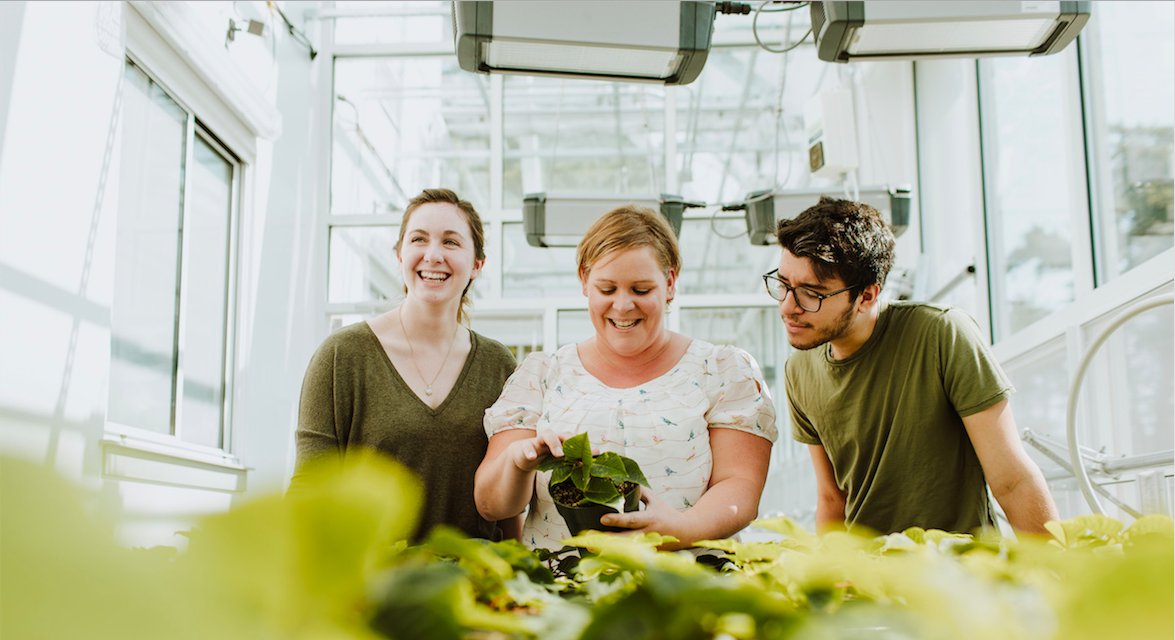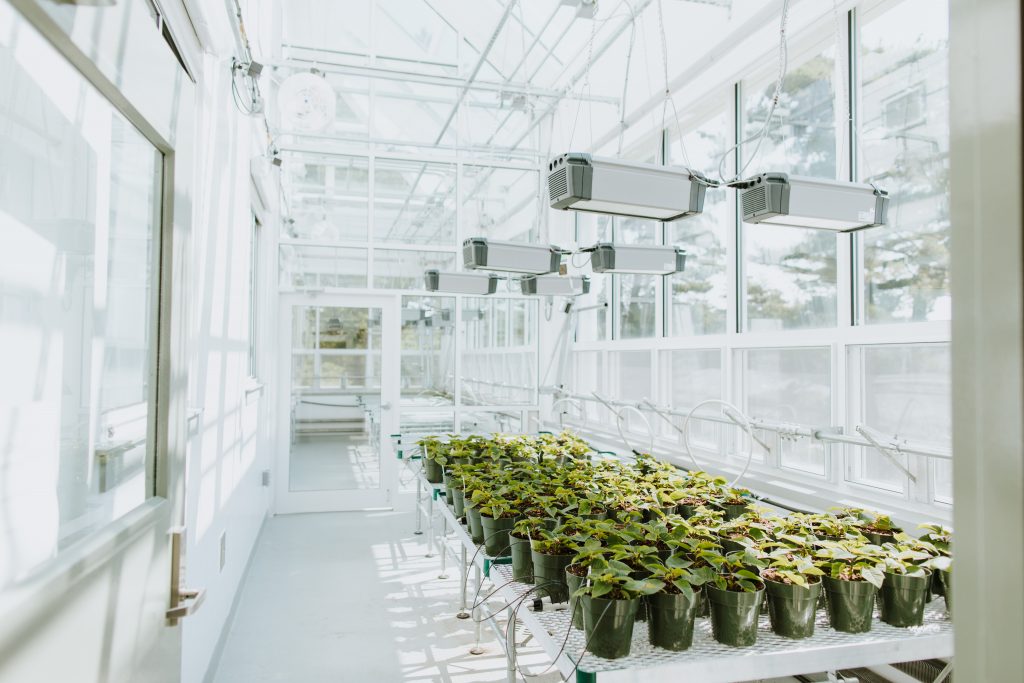A Greenhouse at Gordon
When seen under moonlight, Gordon’s Ken Olsen Science Center (KOSC) can sometimes appear to glow a fluorescent pink, but this is not for show. Rather, this pink glow emanates from the greenhouse that recently opened on the third floor of KOSC—and plays a vital role in the work that goes on inside.
In the new greenhouse, the combination of red and blue wavelengths supply most of the light these plants need to grow. These lights use significantly less energy than the traditional white greenhouse lamps, which use all ROYGBIV wavelengths when, in actuality, only RB is needed for plant growth. These LED lights also give off far less heat, allowing them to be placed much closer to the plants themselves, which means the plants can absorb nutrients faster and more effectively.
The greenhouse is in what Dr. Jennifer Noseworthy (biology) calls a “testing phase” this semester. To test the greenhouse’s environmental capabilities, she is growing a crop of poinsettias, which are high maintenance plants that require lots of environmental control in order to grow optimally.
There are two distinct climate zones in the L-shaped greenhouse space; the smaller of the two is a tropical zone and the larger is a temperate zone. Each zone is equipped with tools that control the temperature, humidity and light. And an outside weather system connected to the greenhouse allows the department to take advantage of weather conditions outside of KOSC on days that can complement tropical and temperate climates.
The benefits to such a high-tech greenhouse are substantial in research, teaching and outreach,” Dr. Greg Keller (biology) says. “We can manipulate the smallest variables to see their effects on specific species of plants that may be valuable economically or ecologically.”
In spring 2018, the greenhouse will serve as a space where classes can be held for majors and non-majors alike, starting with Noseworthy’s 300-level Sustainable Horticulture course and Dr. Ming Zheng’s (biology) Medicinal Botany course.
There are also plans to develop a botany lab in the near future, which will sit adjacent to the greenhouse. The botany lab will allow students and faculty to set up experiments, organize lab materials and, as Keller explains, open up opportunities to “study topics like medicinal botany to understand how compounds produced by plants might be used in medical treatments or sustainable horticulture to focus on greater crop production.”
Article by Billy Jepma ’18, English language and literature, communication arts
 The Bell
The Bell
